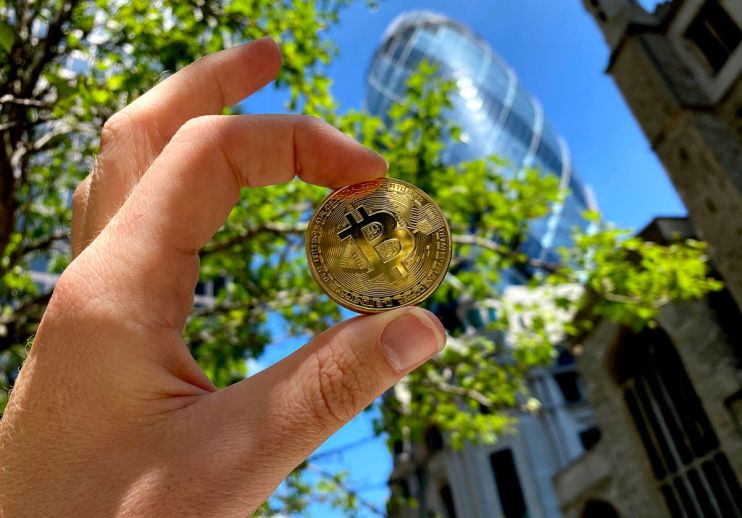
Is the future of our financial system DeFi?

If Bitcoin is the Book of Genesis in crypto’s historical record, then DeFi (decentralised finance) might as well be the New Testament.
Not a big religion buff? That’s ok – we’ve put together a way more detailed explanation about DeFi and its key components. While having knowledge of the broader cryptoasset market is key, DeFi encapsulates an even larger realm of blockchain technology that goes beyond payments and into financial services as a whole.
What is DeFi?

To understand what decentralised finance is, you must first discern it from centralised finance. Basically, centralised finance (though not really a common term prior to DeFi) can describe the financial system as it exists today, in which a central bank (e.g, the Federal Reserve in the US) issues and regulates a currency. Other aspects of a centralised financial system include banks, lenders, and top financial institutions that act as intermediaries between parties (consumers or businesses) in all transactions.
With a centralised financial system, the parties in power set the rules in multiple ways. It could be how a central bank like the Fed determines interest rates or regulates banks, or how those same banks decide who can (and cannot) borrow money or get approved for other financial products.
Arguably the main goal of DeFi, in addition to a host of efficiencies and innovations to financial services, is to cut out the middle man. Instead of banks acting as intermediaries, consumers can conduct financial transactions on a truly peer-to-peer level that is self-executing and immutable (i.e., cannot be altered or forged — one of the main tenets of cryptoassets).
So how are transactions executed in a decentralised finance system? Through a little blockchain innovation known as smart contracts.
Smart Contracts

Perhaps the main pillar of what makes DeFi work, a smart contract is a cryptographic contract between two parties (typically a buyer and seller or borrower and lender) that allows financial transactions to be performed on a blockchain network with zero intermediary parties. Instead, code is written that determines the terms of the contract and how/when it is executed. For a contract to “self-execute,” the predetermined terms will have to be met by all parties involved.
While smart contracts are rather new as far as being put to use, the concept predates Bitcoin. Nick Szabo, creator of Bit Gold, one of the original digital currencies, first proposed the idea back in 1994 as a form of computerised transaction protocols. Despite the title, one of the goals of a smart contract is to eliminate the mountains of physical paperwork that comes with certain transactions.
Smart contracts are executed for several use cases, including the exchange of goods and services, data transfers, borrowing/lending, insurance contracts, and more. The benefits, in the long run, are contracts that execute faster, with better transparency, accuracy, and security when compared to conventional contracts.
dApps
Smart contracts are utilised to power certain decentralised applications (dApps), which are applications built on blockchain networks to facilitate different services, for DeFi or otherwise. The wide majority of dApps are built on the Ethereum blockchain, the first crypto platform to launch smart contract functionality and, as a result, a major innovator in the DeFi space over the past few years.
In the DeFi world, dApps are intended to offer consumers financial services with no intermediaries and eliminate unnecessary fees and waiting periods, while also lowering the barrier to entry and incentivising users with better rates of return. There are many traditional examples of dApps in practice, like lending platforms and savings accounts, but also some more innovative services that exist on decentralised exchanges (DEXs).
A DEX is a peer-to-peer marketplace where users can swap (i.e., trade) cryptoassets for the equivalent value of another via smart contracts. Unlike a centralised crypto exchange where assets can be bought and traded, a DEX is 100% autonomous, meaning no transaction fees, which are typically charged when converting fiat currencies. A DEX like Uniswap (UNI), for example, allows users to swap various Ethereum-based tokens through what are known as liquidity pools, which can potentially earn users yield on their investment.
DeFi the Odds
While the above may give you a good idea of how DeFi intends to flip the financial world on its head, it’s merely the tip of a very large iceberg. Currently, over $200 billion in assets are locked into smart contracts on DeFi platforms (known as total value locked or TVL), and most of that has accumulated over the past few years.
If you’re interested in the DeFi space and its potential growth, eToro allows you to invest in assets like ETH and UNI, which are tokens for two of the biggest DeFi platforms in the crypto-sphere.
Check out some of the cryptoassets we’ve discussed on eToro: ethereum, uniswap and eToro’s DeFi Smart Portfolio.
Cryptoassets are unregulated in some EU countries and the UK. No consumer protection. Tax on profits may apply.
This communication is for information and education purposes only and should not be taken as investment advice, a personal recommendation, or an offer of, or solicitation to buy or sell, any financial instruments. This material has been prepared without taking into account any particular recipient’s investment objectives or financial situation, and has not been prepared in accordance with the legal and regulatory requirements to promote independent research. Any references to past or future performance of a financial instrument, index or a packaged investment product are not, and should not be taken as, a reliable indicator of future results. eToro makes no representation and assumes no liability as to the accuracy or completeness of the content of this publication.
